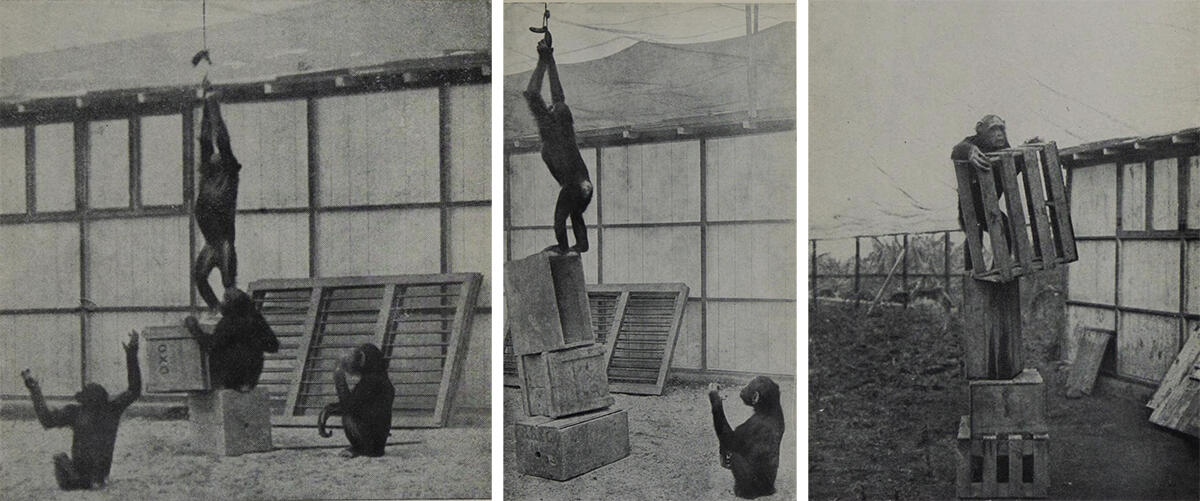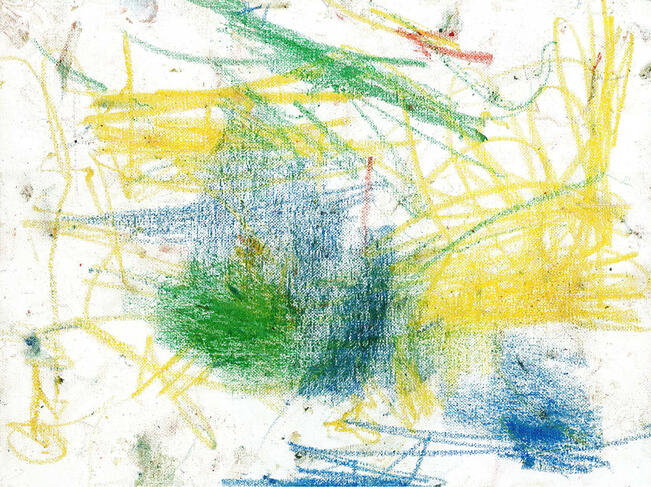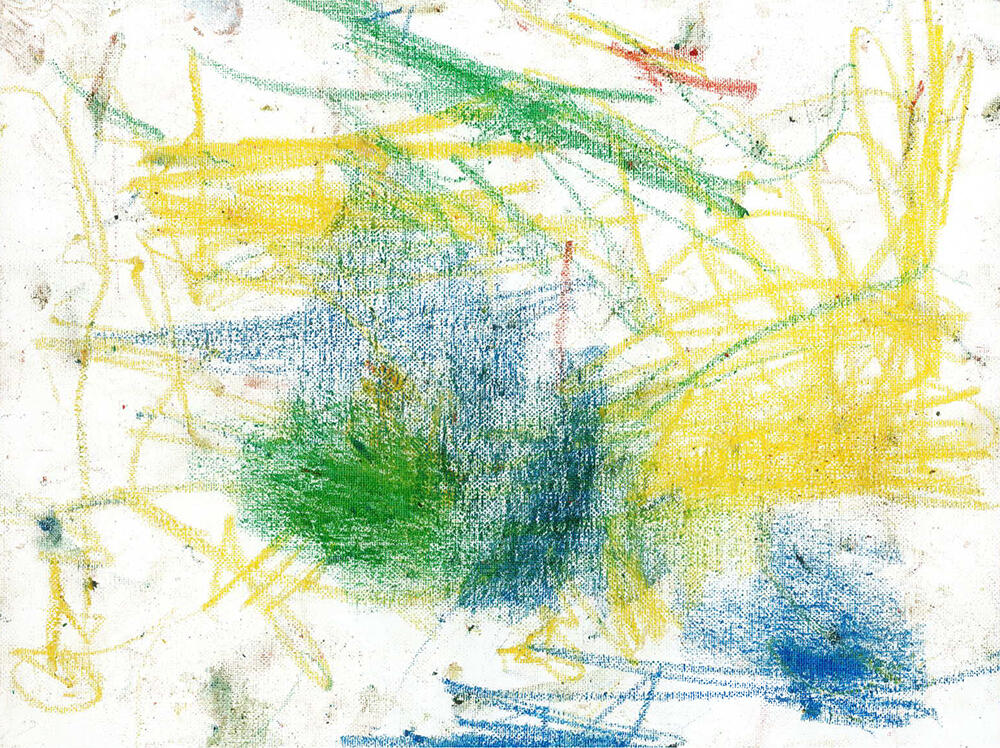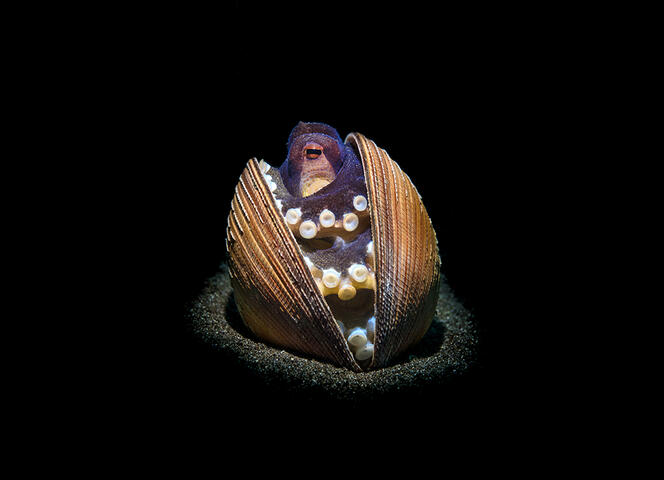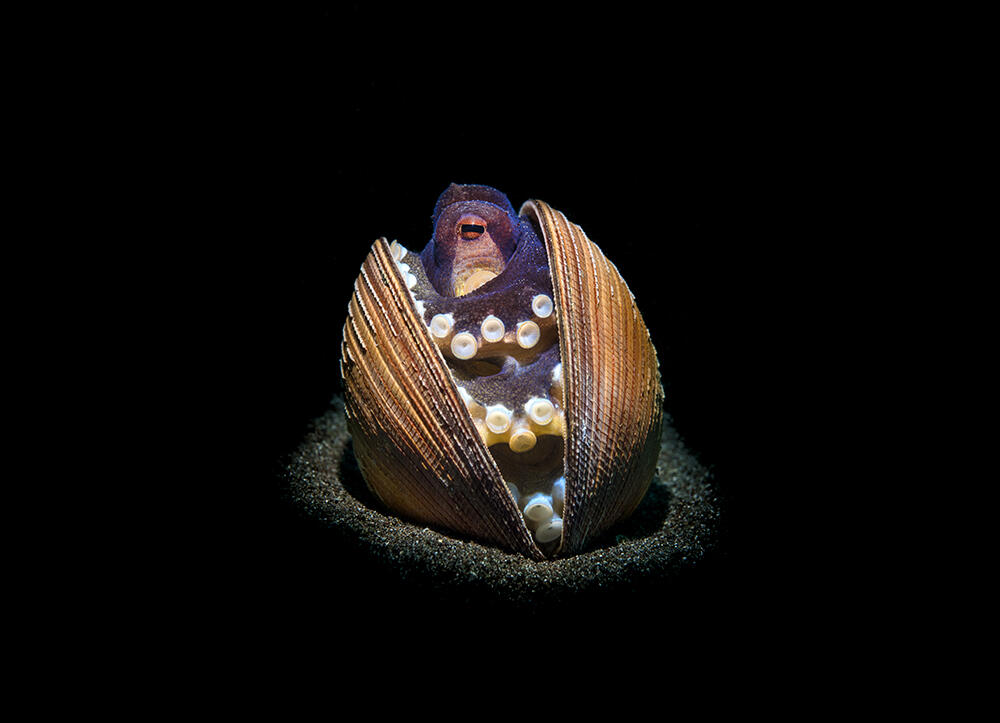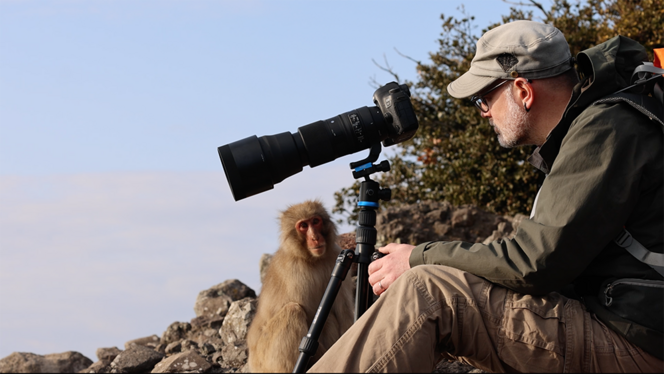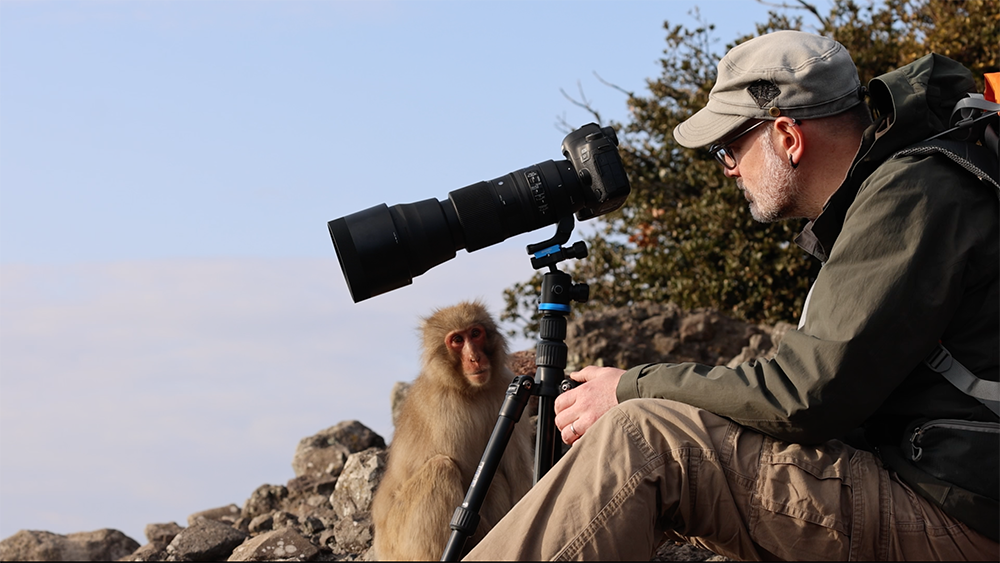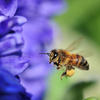You are here
Animals: from mechanical objects to sentient subjects
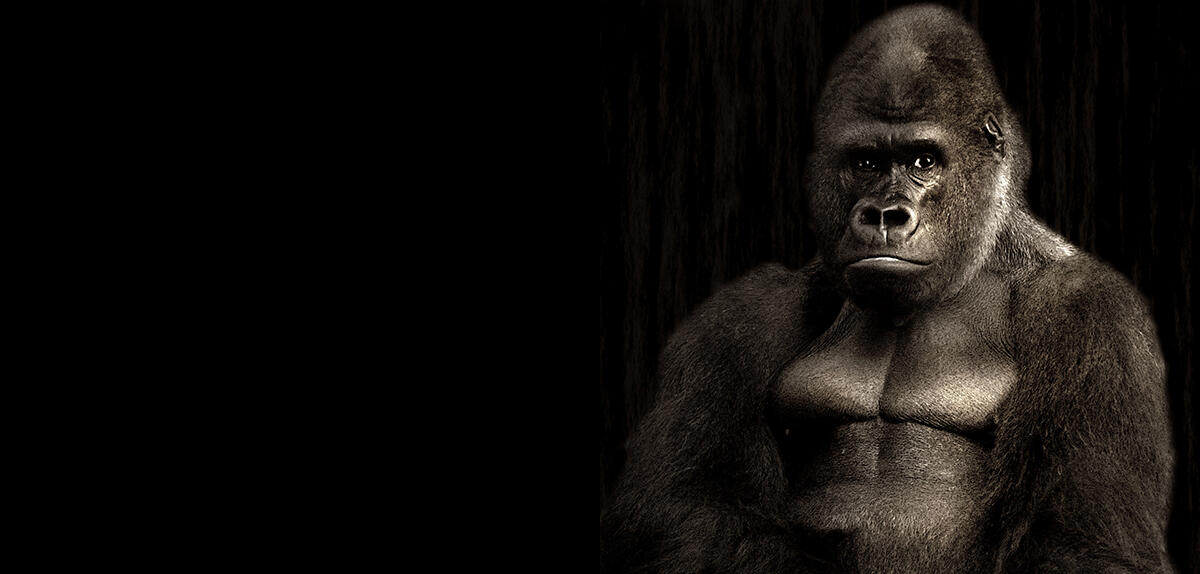
(This article is taken from the special report “L'intelligence animale se dévoile” (“Animal intelligence unveiled”), originally published in issue 14 of Carnets de science
The story has been around for over three centuries: in the 1670s, a theologian and zealous disciple of Descartes named Nicolas Malebranche is said to have had no qualms in kicking his own dog so that he could compare the cries of the animal to the sounds made by a bell being struck. His excuse was that he was simply applying the ideas of his mentor René Descartes who, in his Discourse on Method, wrote that it was better to admit that animals “move like machines” than to suppose that, like humans, they have immortal souls. For the philosopher, dogs and monkeys were nothing more than automata, albeit a little more sophisticated than mechanical clocks.
Historians of ideas are still debating as to whether Descartes or Malebranche bears the greater responsibility for the notion of the animal as a mechanical object. Although references to clocks were soon discarded, the Cartesian model of an animal that does nothing more than respond mechanically to stimuli remained alive and kicking right up to the dawn of the twentieth century. Nonetheless, the mid-nineteenth century saw the beginnings of a shift in thinking. In France, the zoologist Isidore Geoffroy Saint-Hilaire was one of those caught up in the enthusiasm for naturalism. In 1854, he was the first to use the term “ethology”, derived from the Greek word “ethos”, meaning “use” or “custom”. This neologism reflected the growing interest of many scientists in the study of behaviour – whether of humans or of animals. Several generations of ethologists went on to observe the latter more closely, initially in a purely descriptive way, and then moving on to a more experimental approach in the twentieth century.
From reflexes to decision-making
They discovered that animals had unsuspected skills, starting with the ability to learn. In the early 1930s, rats began to be used in laboratories on a large scale. The American psychologist Skinner showed that they could modify their behaviour through trial and error – the rodents learned that by activating a lever they could open their cage and access food. However, the mechanistic model continued to prevail since it was thought that animals were subject to a degree of conditioning and merely reacted mindlessly and reflexively, as shown, around the same time, by the Russian physiologist Ivan Pavlov who had carried out similar experiments on dogs.
Other studies, however, were beginning to challenge assumptions about the superiority of humans. “Scientists started to realise that considering animals like machines that functioned through stimulus and response wasn't quite right,” explains Pierre Le Neindre, an agricultural engineer and ethologist at the French National Research Institute for Agriculture, Food and Environment (INRAE), and the coordinator of a wide-ranging scientific investigation into animal consciousness1 . “They observed that animals also responded to situations according to the way they perceived them, and made decisions based on their environment and prior experience.” In other words, they behaved like individuals aware of the situation in which they found themselves, able to adapt to circumstances and anticipate the future, which was how ethology came to define animal intelligence.
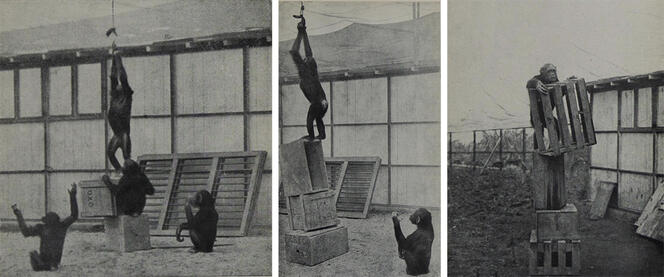
This behaviour was first seen in chimpanzees, with the pioneering experiments of the German psychologist Wolfgang Köhler between 1913 and 1917. To investigate a chimpanzee's ability to fit in its immediate surroundings, Köhler hung a banana from the ceiling of a room filled with randomly scattered wooden boxes. The aim of the test was to find out whether the animals would realise that they had to stack the crates in order to reach the banana. Although the chimps initially appeared to have no idea of what to do, they suddenly discovered the solution and started to work out how to pile up the boxes. It was as if they had a global vision of the situation, demonstrating an ability to interact with their environment similar to that of humans, a skill that did not sit comfortably with the stimulus-reflex and conditioning model.
Since Köhler's chimpanzees, many other species, both vertebrates and non-vertebrates, some phylogenetically far more distant from humans than primates, have revealed capacities long thought to be the prerogative of humans. For instance, the tayras of South and Central America are also very fond of bananas, but these are often snapped up by other more agile animals. Not a problem: they pick the fruits while they're still green, leave them to ripen in a safe place, and come back to eat them a few weeks later! These mammals are thus able to think ahead, both in time and space. As are farm animals, even though they are totally dependent on what they are fed and hardly ever have the opportunity to make decisions. Le Neindre has shown that lambs can learn certain unusual forms of behaviour that only provide them with a reward through indirect means, which indicates that, even when deprived of autonomy, animals have expectations about the future.
Brain performance close to ours
There is now a plethora of scientific papers describing newly-discovered behaviour in all sorts of animal species. One after the other, characteristics once thought to be specifically human have been shown not to be so. Animals use tools, as the primatologist Jane Goodall showed as early as the 1960s. They can count, they can remember things, they can anticipate the future, they have emotions, and they even use more elaborate forms of language than we thought. In the 1980s, it was discovered that even birds, long considered relatively unintelligent, had unsuspected abilities. Alex, the African grey parrot belonging to the American ethologist Irene Pepperberg, radically changed the way we view them by showing that he could not only name objects, but also use around fifty words and form sentences such as “I want to drink”. On top of that, Alex could describe an object's shape and what it was made of, count up to 6, and say how many items of a given colour there were in a collection of things.
In fact, it had always been thought that birds lacked a neocortex, an area of the brain involved in complex cognitive abilities in mammals. “It was discovered that there is a zone in the bird's brain called the pallium, which has an extremely high density of neurons, comparable to that found in primates, and which is even greater in parrots and corvids,” says Dalila Bovet, an ethologist at the ethology, cognition and development laboratory at Université Paris-Nanterre. “The pallium can be thought of as the equivalent of the neocortex in mammals.” This seriously challenges the old idea that humans have, if not the largest, at least the most powerful brain of all living creatures. Indeed, since neuroscience first started exploring cerebral mechanisms, including in animal species, “we have discovered that the brains of vertebrates, including fish, are very similar to ours”, says the neurobiologist and philosopher Georges Chapouthier. “Among the invertebrates, the brain performance of cephalopods, and in particular of octopuses and cuttlefish, is surprisingly close to our own, even though their anatomy is very different.”
Laughing rats and chimps
While there is widespread belief that at least a sophisticated social organisation is unique to humans, the identification of dominant individuals in groups of many animal species, as well as the relentless logistics that rules in hives and anthills, shows that this isn't the case. Bovet points out the interest animals have in developing cooperative skills between individuals, such as exchanging food. “Some vampire bats feed only on blood and can't survive for more than 48 hours without finding prey. When this happens to one of them, its fellows help it by regurgitating some of the blood they were able to collect. That way, all the members of the group manage to survive.”
But then, what about laughter? Who can doubt it is specific to humans? There again, not so. “As the Estonian neuroscientist Jaak Panksepp showed, rats never stop laughing when they're tickled,” says Chapouthier. “Young ones play together and laugh all the time, but you can only hear them in ultrasound. I personally spent a year with chimpanzees, and they love to play pranks. One of them, who was very friendly, would sometimes rush towards me threateningly, and I didn't understand why. One day, I backed away as if I was scared of him, and he ran off laughing! His threat was just a joke, but it had taken me a while to realise it.” As well as laughter and humour, a whole range of emotions and feelings is also apparent in the life of animals, and this has become a full-blown field of investigation in its own right.
Knowing that you know… or that you don't know
These cognitive skills mean that it is no longer possible to question the fact that animals are aware, in other words that they have a perception of the world, and that they know where they are, where they are going and what they are doing. This awareness probably goes hand-in-hand with self-awareness (although this remains to be confirmed for the vast majority of species), as well as with awareness of others. For instance, the fact that two lower-ranking chimpanzees are able to form an alliance against a third, dominant individual implies that they know who they are, where they stand in the group, who and where the others are and, finally, what the other one is thinking, without which no alliance would be possible. These animals are therefore able to recognise the existence of mental states in themselves as well as in other individuals, a dual ability referred to in cognitive science as the theory of mind.
Some species even appear to have metacognition, which is the ability to know that you know or that you don't know. Experiments exploring this idea have been carried out with dolphins, who are asked to recognise two sounds, one low-frequency, the other high-frequency, associated with two different levers. When the dolphin thinks it can hear a low frequency, it presses lever A, and lever B for the high frequency. If it answers correctly, it gets a reward. The difference in frequency between the sounds is gradually reduced, making it increasingly difficult to assign them to one frequency or the other. When the dolphin is no longer sure of the answer, it can activate a third lever, which only gives it a smaller reward. According to the researchers, this means “I don't know, but I hope to get a reward anyway”.
These multiple, complex skills are increasingly making it clear that animals really are living subjects in their own right and that they experience things. In short, they are beings with feelings, or as ethologists prefer to say, sentient beings. The notion of “sentience”, a standard scientific term in the English-speaking world, has only recently begun to be used in France.
“Unlike the notion of ‘having feelings’, sentience includes the idea of awareness,” comments the primatologist Élise Huchard, a researcher at the Centre for Functional and Evolutionary Ecology2 in Montpellier (southeastern France). “To say that a being is sentient is to recognise that they have subjective experiences, that they are present in the world as a living subject and not just as an object, which implies forms of awareness and self-awareness.” Sentience thus implies that the subject has goals and intentionality, whereas “having feelings” is more closely related to a kind of passivity, involving perception and reactivity, but without the idea of an active subject. “In ethics, sentience is a gateway to ethical consideration,” adds the researcher. “If an individual is sentient, it should be worthy of ethical consideration, bearing in mind that, as far as we currently know, most vertebrates are sentient, as well as some invertebrates such as cephalopods.”
Recognition of field observations
In the same vein, Cédric Sueur, an ethologist at the Hubert Curien Multidisciplinary Institute3, prefers to use the term “agency”, which he defines as “the ability of an individual to act on its environment intentionally, and therefore with a degree of awareness”. This is an approach that is very similar to that of sentience, but one which, in his view, places greater emphasis on recognising the status of the animal as a subject, for scientific as well as ethical reasons. “Letting animals express their reactions and behaviour is essential if we are to assess their true cognitive skills,” the researcher points out. “However, our prejudices, as well as experimental conditions, still frequently impede their ability to act.”
Experimental conditions and possibilities are one of the two major limitations that still hamper ethologists in their desire to better understand what animals think and experience. For a long time, experiment was the rule, as opposed to field observations. “We couldn't claim to be doing science when we were just observing animals in their natural environment,” Huchard says. “To obtain scientific results, standardised trials were required, carried out under laboratory conditions.” Today however, the validity of field work is widely recognised, whereas attention has been drawn to biases related to certain behavioural experiments that involve animals being asked to carry out tasks that are sometimes disconnected from their natural and sensory background. This can generate stress, and also raise ethical problems related to the captivity of the subjects being studied. In addition, their behaviour can also be influenced by the presence of the researcher. However, field observations are extremely time-consuming, can be hampered by logistical issues, and are often limited to correlative approaches that fail to establish the causality of a phenomenon. This means that, rather than being opposed, laboratory and field approaches are actually complementary.
Towards critical anthropomorphism
The second major limitation is more profound: how can we avoid comparing animals' experiences with our own and reintroducing a scale of values? For years, anthropomorphism was regarded as a trap to be avoided at all costs: under no circumstances should a researcher attribute to animals behaviour similar to that of humans, or interpret their reactions by making a parallel with our own. A well-known example is the temptation to interpret certain facial expressions in primates as smiles. However, less naive forms of anthropomorphism can also make their way into the neurosciences. For far too long it was thought that birds, as well as fish and other species very distant from humans, had only limited cognitive and emotional skills. This was because everyone was convinced that their brains were nothing like our own, and that there was therefore no point in focusing on this question.
However, ethology has entered a new phase. It is now thought that this radical distrust of anthropomorphism has proved relatively counterproductive since it has stifled a host of research approaches and hypotheses. The way we look at the world is by definition anthropomorphic, so rather than trying to escape this, we should be aware of it. It is then up to researchers to implement what Sueur calls “critical anthropomorphism, which makes it possible to put forward several hypotheses, while backing this up with rigorous scientific evidence to validate a specific cognitive skill in animals, without making any value judgements”. The researcher stresses that this critical method takes into consideration the unique nature of animal intelligence and intelligences – every species reacts with its own constraints and in its own environment –, without seeking to make a qualitative comparison with human intelligence, or establish a new hierarchy within the animal kingdom.
Nonetheless, critical anthropomorphism should not prevent us from being imaginative and trying, as far as possible, to “think like an animal”. By remembering, for example, that types of perception, which vary greatly from one species to another, are a key aspect of cognition. Birds react positively to the mirror test, which is used to assess self-awareness, whereas dogs do not. However, this set-up is based only on vision, and tests of the same kind adapted to the sense of smell have shown that dogs react positively to it. Thinking like an animal also means coming to terms with the idea, even though this is very unfamiliar to us, that intelligence is not necessarily a question of degree, but that it can be deployed in a wide range of different ways and means – the collective intelligence of ants is just one of many examples of this. We should think, therefore, in terms of differences and not of superiority. Although we will never get inside the minds of animals, getting to know them better can only increase our respect for them. ♦



